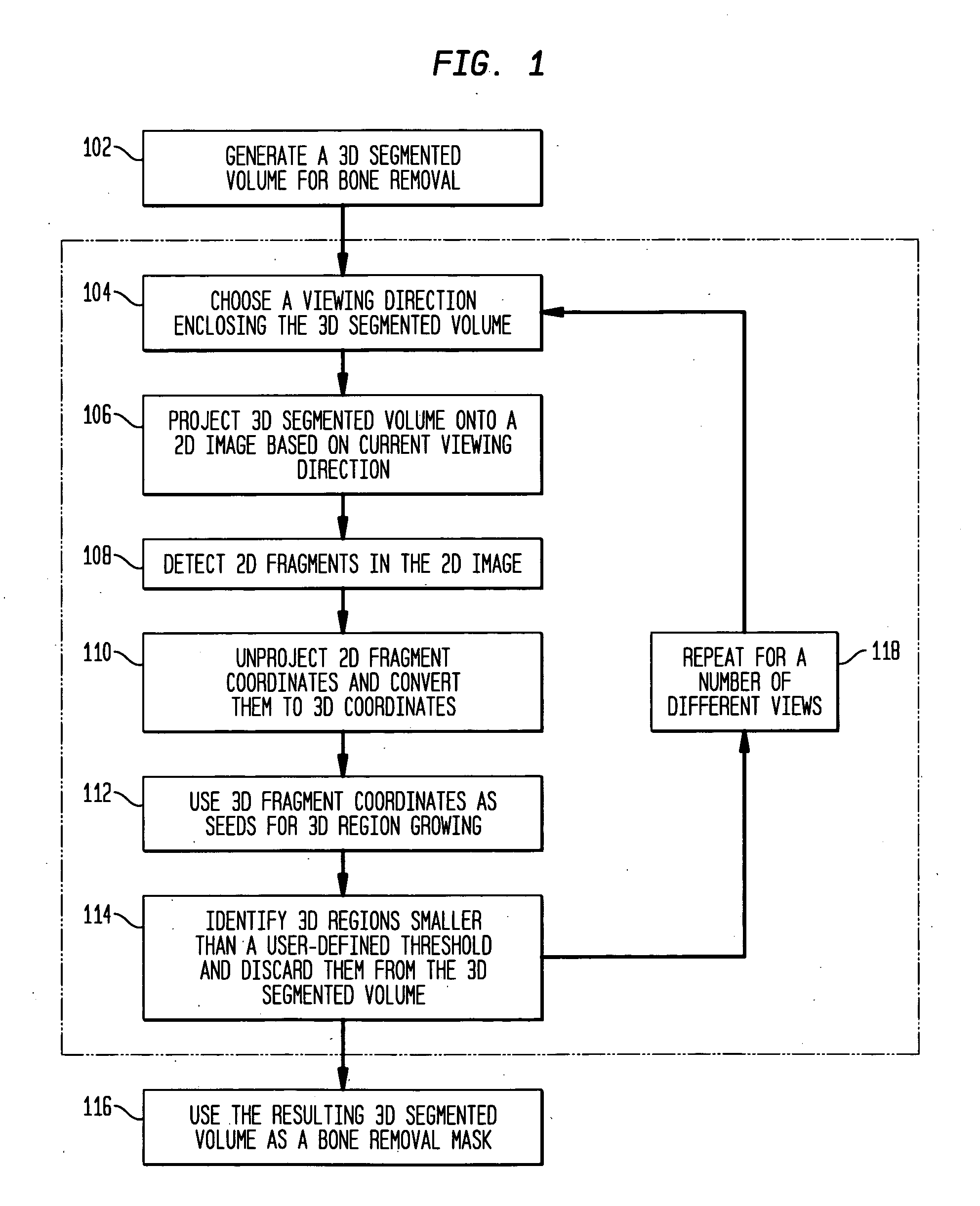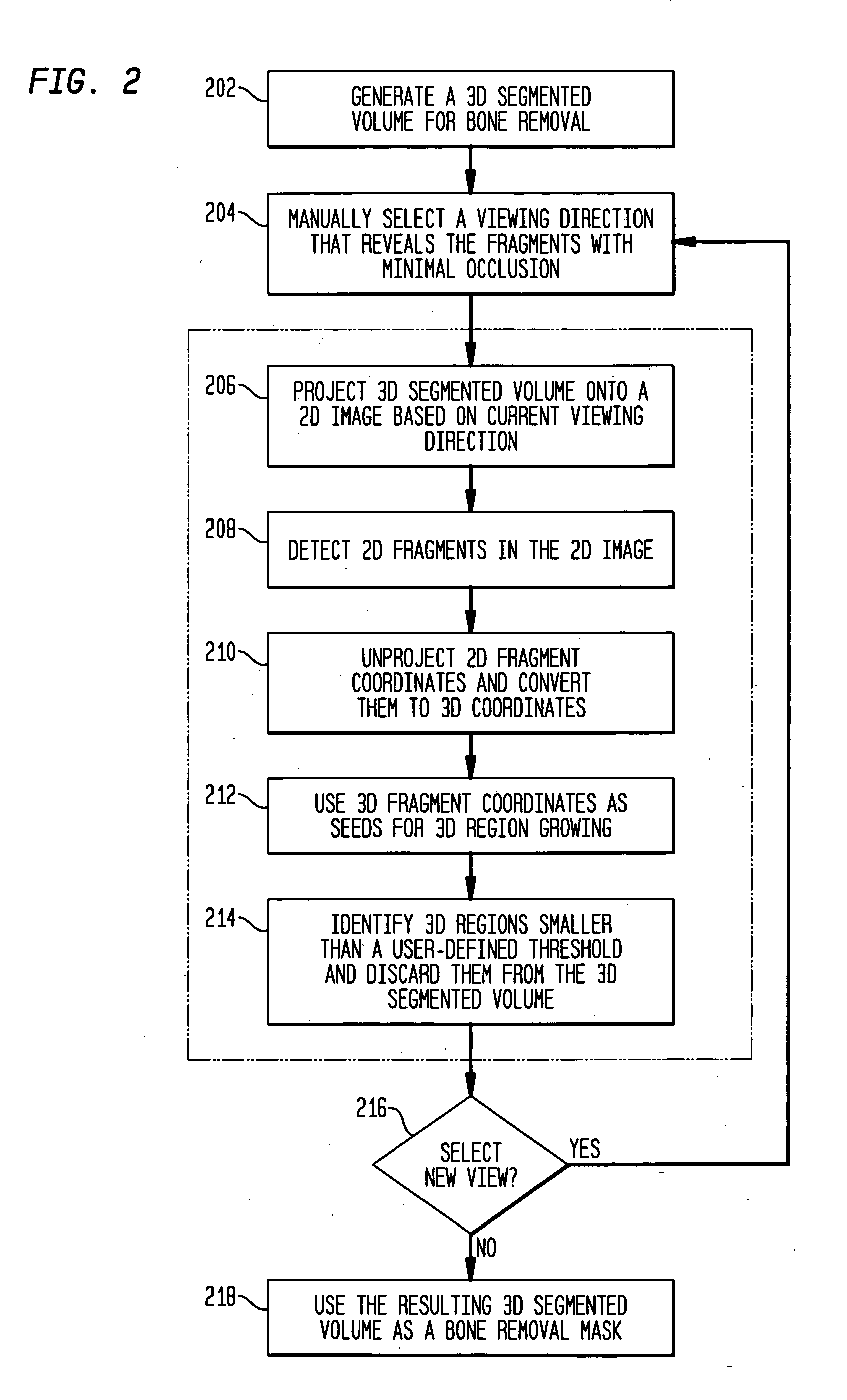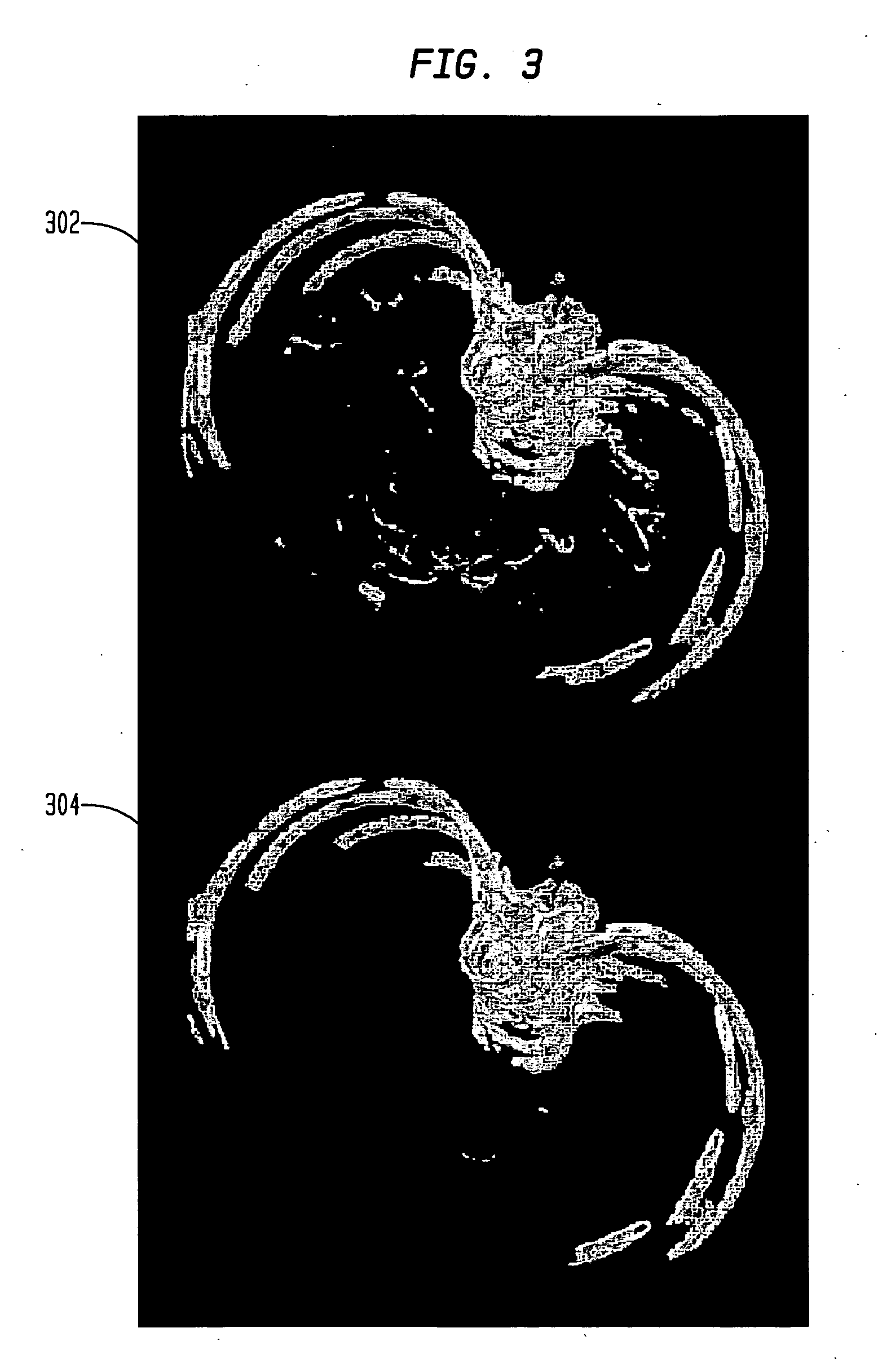Image-based method for detection and removal of small fragments in segmented three-dimensional volumes
- Summary
- Abstract
- Description
- Claims
- Application Information
AI Technical Summary
Benefits of technology
Problems solved by technology
Method used
Image
Examples
Embodiment Construction
[0012] The present invention is directed to a method for the removal of small isolated fragments in segmented three-dimensional volumes of tomographic medical data. In accordance with the present invention, the time-consuming manual picking of 2D point coordinates used for ray picking and 3D region growing is replaced by an image-based approach that detects 2D point coordinates corresponding to fragments in a 2D volume image that is rendered automatically. To improve the efficacy of this image-based method, several 2D volume rendered images from different viewing directions are generated and seed points are identified in each one of them. The efficacy of fragment detection is further improved by partitioning the volume into sub-sections, rendering each 3D subsection to several 2D images from different viewing directions, and detecting 2D seed point coordinates for each sub-section. Alternatively, the viewing directions can be selected by the user manually. One application for the me...
PUM
| Property | Measurement | Unit |
|---|---|---|
| Volume | aaaaa | aaaaa |
Abstract
Description
Claims
Application Information
 Login to View More
Login to View More - R&D
- Intellectual Property
- Life Sciences
- Materials
- Tech Scout
- Unparalleled Data Quality
- Higher Quality Content
- 60% Fewer Hallucinations
Browse by: Latest US Patents, China's latest patents, Technical Efficacy Thesaurus, Application Domain, Technology Topic, Popular Technical Reports.
© 2025 PatSnap. All rights reserved.Legal|Privacy policy|Modern Slavery Act Transparency Statement|Sitemap|About US| Contact US: help@patsnap.com



